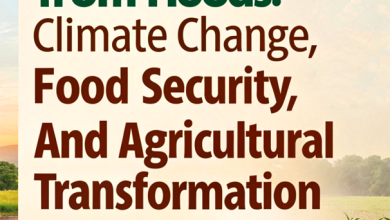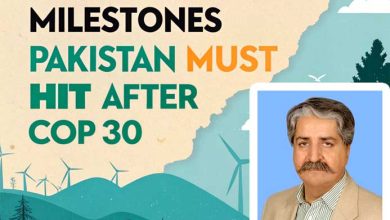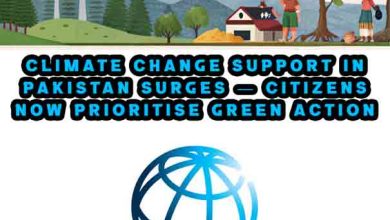Pakistan Ranked Most Vulnerable to Climate Crisis : German-watch
Pakistan ranked as the most vulnerable country to climate change in 2022, highlighting the devastating effects of global warming on the nation. According to the Climate Risk Index (CRI) 2025 report by Germanwatch, Pakistan topped the list due to unprecedented floods, heatwaves, and other extreme weather events that severely impacted lives and the economy.
The Impact of Rising Temperatures and Water Scarcity in Agriculture
Climate change has intensified extreme weather patterns, leading to rising temperatures and water scarcity in agriculture. These factors have caused significant damage to Pakistan’s agricultural sector, affecting food security and the livelihoods of millions of farmers.
Pakistan’s 2022 Climate Crisis: A Wake-up Call
In 2022, Pakistan faced one of the worst climate disasters in its history. Devastating floods affected over 33 million people, claiming more than 1,700 lives. The floods, primarily caused by record-breaking monsoon rainfall and Glacial Lake Outburst Floods (GLOFs), displaced over eight million people and destroyed 1.3 million homes.
Pakistan’s Meteorological Department reported a 243% increase in rainfall in August 2022, making it the wettest August since 1961. Additionally, the country faced severe heatwaves from March to May, leading to early snowmelt and increased GLOFs, which further exacerbated flooding.
Economic and Social Consequences
The financial impact of these climate disasters was staggering. Pakistan incurred economic losses estimated at $30 billion, with reconstruction costs reaching $16 billion. The agricultural sector, a crucial pillar of Pakistan’s economy, suffered massive losses due to submerged farmlands and destroyed crops. Water scarcity in agriculture worsened, reducing crop yields and pushing food prices higher.
Furthermore, climate-induced disasters significantly affected public health. Waterborne diseases such as cholera, diarrhea, malaria, and dengue surged due to contaminated water sources, overwhelming healthcare facilities and worsening the humanitarian crisis.
High-Emitting Countries’ Role and Climate Finance Challenges
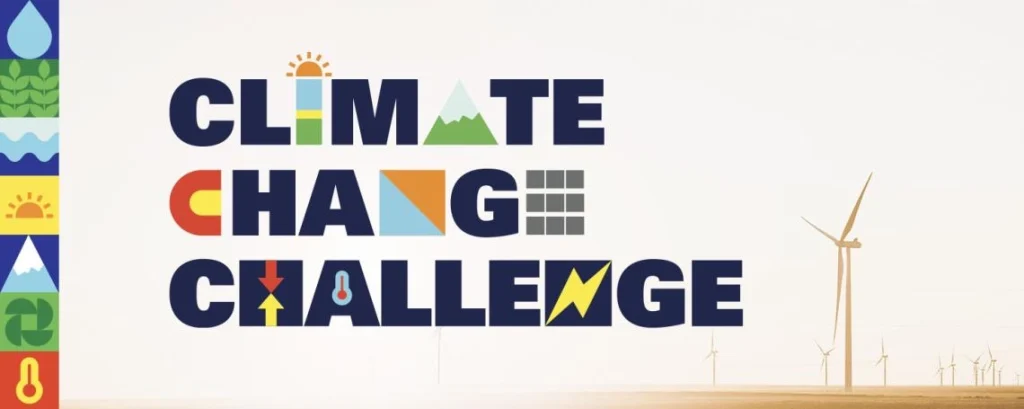
The report criticized high-emitting nations for failing to provide adequate climate finance to vulnerable countries like Pakistan. The failure of COP29 to yield an ambitious New Collective Quantified Goal (NCQG) on climate finance left Pakistan struggling to secure the necessary funds for adaptation and recovery. The lack of financial and technical support from developed nations continues to hinder Pakistan’s ability to implement its National Adaptation Plan effectively.
Mitigation and Adaptation: A Path Forward
To combat rising temperatures and water scarcity in agriculture, Pakistan must focus on climate adaptation strategies, including:
- Water Management Reforms: Implementing efficient irrigation systems, promoting rainwater harvesting, and constructing new reservoirs to address water shortages.
- Climate-Resilient Crops: Encouraging the use of drought-resistant crop varieties to mitigate food insecurity.
- Early Warning Systems: Strengthening disaster preparedness through improved meteorological forecasting and early warning dissemination to vulnerable communities.
- Sustainable Agriculture Practices: Reducing water wastage and adopting organic farming techniques to preserve soil fertility.
Lessons from Other Countries
Experts recommend that Pakistan take inspiration from Bangladesh’s successful climate adaptation measures. Bangladesh has significantly reduced cyclone-related fatalities through improved disaster preparedness and early warning systems. A similar approach in Pakistan could enhance resilience against future climate disasters.
The Global Climate Crisis: A Shared Responsibility
The Climate Risk Index 2025 underscores that extreme weather events are becoming the new normal worldwide. Between 1993 and 2022, over 9,400 extreme weather events occurred globally, resulting in nearly 800,000 deaths and economic damages worth $4.2 trillion.
While Pakistan remains highly vulnerable, other nations, including China, India, and the USA, also face escalating climate risks. Developed countries must take responsibility by reducing carbon emissions and supporting adaptation efforts in the Global South.
Conclusion
Pakistan’s ranking as the most vulnerable country to climate change in 2022 serves as a stark reminder of the urgent need for climate action. Rising temperatures and water scarcity in agriculture threaten food security, economic stability, and public health. High-emitting countries must honor their commitments to climate finance, while Pakistan should prioritize adaptive measures to protect its people and economy from future climate disasters.
With effective policies, sustainable practices, and international support, Pakistan can strengthen its resilience against climate change and mitigate the devastating impact of rising temperatures and water scarcity in agriculture.
Climate Risk Index 2025 Report Download Link:
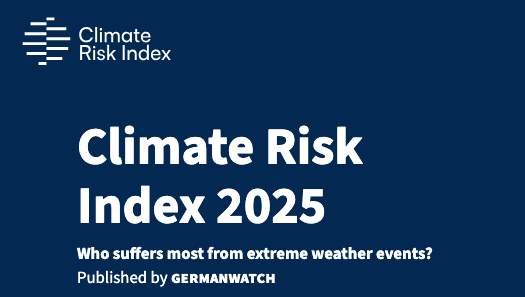
https://www.germanwatch.org/sites/default/files/2025-02/Climate%20Risk%20Index%202025.pdf



